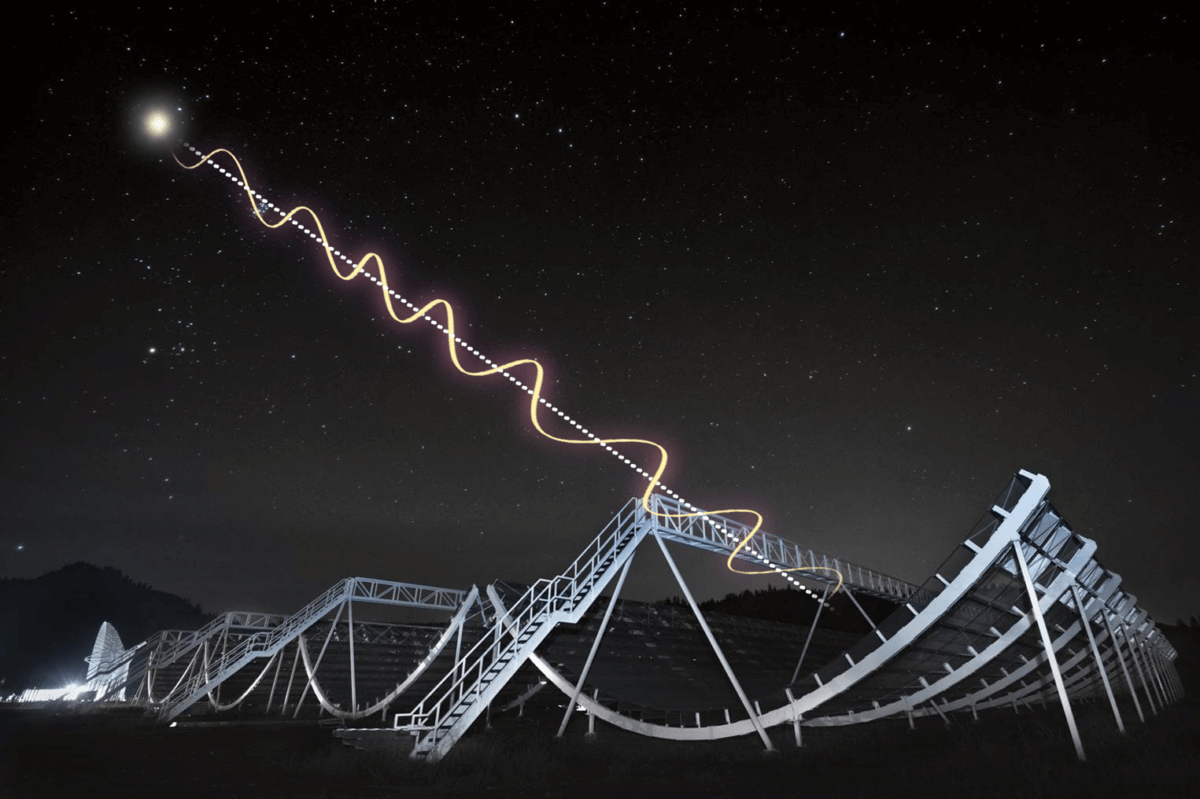
Study detailing the properties of polarized light from 128 non-repeating FRBs reveals mysterious cosmic explosions originate in far-away galaxies like our own Milky Way (Credit: University of Toronto)
The findings, in a nutshell
Delving into a fresh trove of FRB data from the Canadian Hydrogen Intensity Mapping Experiment (CHIME), researchers at the University of Toronto examined the polarized light signatures of 128 one-off “non-repeating” FRBs. Their analysis, published in The Astrophysical Journal, reveals these fleeting bursts likely emanate from galaxies similar to our own Milky Way – regions with modest densities and modest magnetic fields.
This contrasts starkly with the handful of hyperactive “repeating” FRB sources astronomers have scrutinized until now. Those seemed to arise in far more extreme, densely-magnetized cosmic environments. With this new study, it appears the silent majority of FRBs (97% don’t repeat) are cut from a different cloth than their vocal few cousins.
“This was the first look at the other 97%,” explains lead author Ayush Pandhi, a PhD student at the Dunlap Institute for Astronomy and Astrophysics and the David A. Dunlap Department of Astronomy and Astrophysics at the University of Toronto, in a media release. “It allows us to reconsider what we think FRBs are and see how repeating and non-repeating FRBs may be different.”

Methodology: How Did Researchers Find the Radio Waves’ Source?
To uncover these insights, the team pioneered an innovative method of scrutinizing polarized light data from FRBs detected by CHIME’s unprecedented swept sky surveys. Unlike conventional radio telescopes limited to targeting small sky patches, CHIME’s continent-spanning cylindrical design enables it to continuously monitor billions of light years of cosmic real estate.
While brightness has dominated past FRB studies, the researchers dug deeper by analyzing how the polarized radio waves oscillate – both over time and across different light frequencies (colors). These polarization signatures encode telltale markers about the environments that spawn FRBs and the intervening matter the signals traverse.
By modeling how polarization twists and evolves, astronomers could reverse-engineer key properties of the FRB locales – their densities and magnetic field strengths. For the non-repeaters, relatively mild conditions resembling our galaxy emerged.
This pioneering polarimetric profiling points to non-repeating FRBs either being a completely distinct breed from repeaters or potentially older, less active evolutionary phases of the same underlying phenomenon. Either scenario upends older assumptions that all FRBs arise from similar circumstances.
“This is a new way to analyze the data we have on FRBs. Instead of just looking at how bright something is, we’re also looking at the angle of the light’s vibrating electromagnetic waves,” says Pandhi. “It gives you additional information about how and where that light is produced, and what it has passed through on its journey to us over many millions of light years.”











Well where did they come from? Did I miss that?
Galaxies similar to ours with modest magnetic fields and densities
They came from galaxies similar to ours with modest density and magnetic fields
from galaxies similar to our own Milky Way – regions with modest densities and modest magnetic fields.
Tbh I think it’s a pretty misleading title, but where they said the following, I think the guy who wrote it was trying to implicate that they found a brand new way to study them and eventually, hopefully, find the origins.
“ researchers at the University of Toronto examined the polarized light signatures of 128 one-off “non-repeating” FRBs. Their analysis, published in The Astrophysical Journal, reveals these fleeting bursts likely emanate from galaxies similar to our own Milky Way – regions with modest densities and modest magnetic fields.”